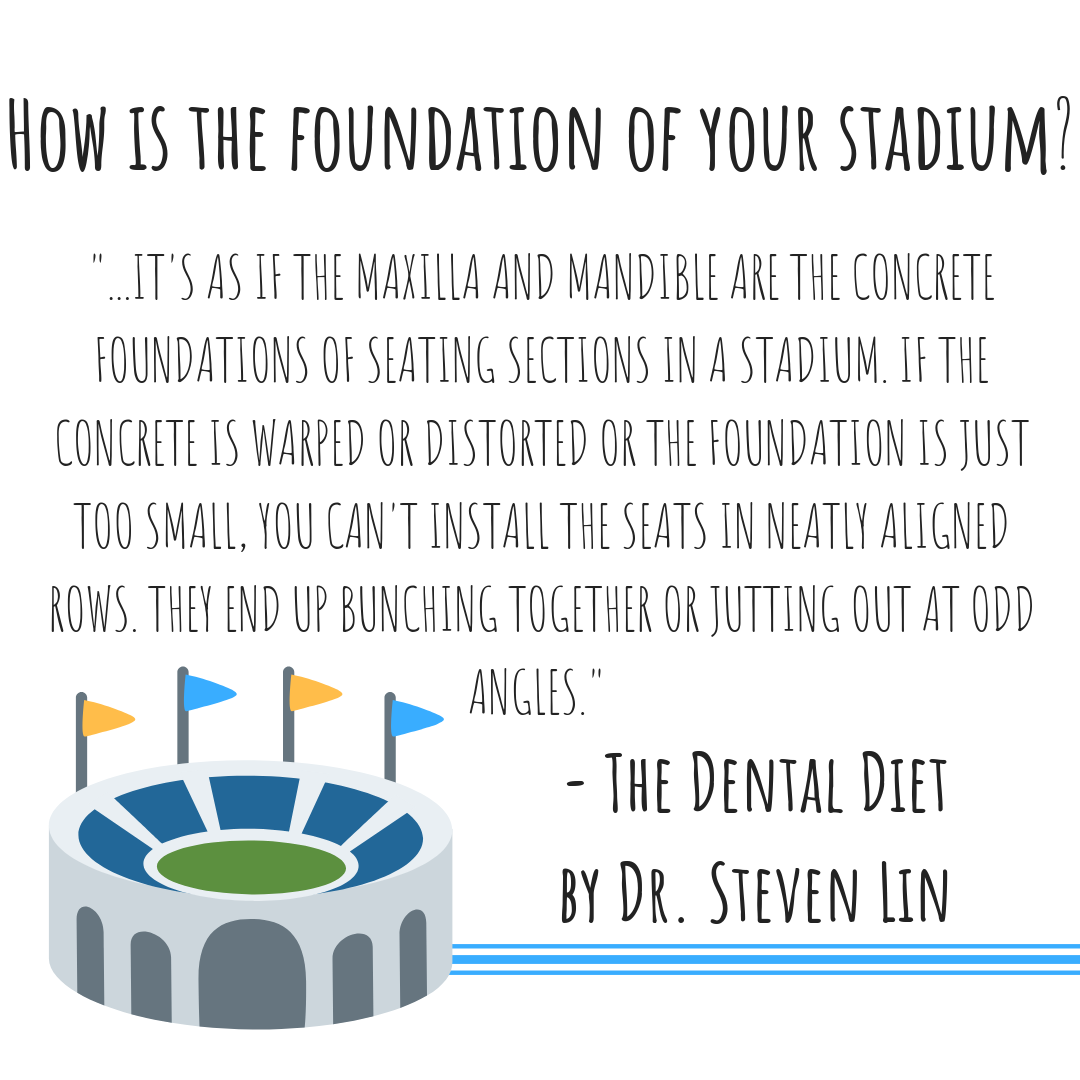Why Palatal Expansion May Be Recommended For You
If you’ve been down in the rabbit hole of myofunctional therapy, tongue-ties, snoring or sleep apnea, you’ve surely run across the phrase palatal expansion. You might have also heard of RPE (rapid palatal expansion).
Palatal expansion is an orthodontic treatment that focuses on the “growing” or expanding the dental arch. While it can be done for cosmetic reasons, this procedure is usually done to address airway-related disorders such as obstructive sleep apnea or difficulty nasal breathing.
In my myofunctional therapy practice, I have many clients in all phases of palatal expansion. This expansion is necessary to help correct misguided craniofacial growth resulting from myofunctional impairments, such as mouth breathing, open mouth resting posture, or incorrect tongue posture.
What Is Palatal Expansion?
Palatal expansion is an orthodontic procedure in which a device is used to widen the upper jaw. This procedure will widen the arch and create more room for teeth to grow. In children, this procedure is used for:
- Correction of a crossbite. Ideally, the lower teeth are supposed to sit just inside the upper teeth. When there is a crowding issue, a crossbite may occur and the upper teeth (maxillary teeth) will end up on the inside of the lower teeth.
- Make room for all teeth. If there is crowding with primary teeth, there will most certainly be a space issue with adult, permanent teeth. By making more room, you can decrease the likelihood of impacted teeth or teeth that need to be extracted to make room. (Which is highly frowned upon these days).
- Correction of airway-related disorders. When a person has a very narrow facial build, this can cause problems with breathing. By expanding the upper jaw, a person may have an easier time breathing through the nose.
- Corrects misguided craniofacial growth. When the face is clearly growing incorrectly, expansion may be just the corrective procedure needed to help create symmetry and correction of improper growth.
What are the benefits of palatal expansion?
When the teeth are misaligned, braces are often used to correct the misalignment. However, if there isn’t enough “room in the house” for all the teeth, then it can be very difficult to straighten the teeth. When I say “room in the house” I’m talking about the room in the bone for the teeth to have a “home”. A great explanation comes from Dr. Steven Lin in his book “The Dental Diet“. In a nutshell, he talks about the upper and lower jaw being like sections of stadium seating. Imagine you have a concrete slab and you’re going to install 16 seats across it. Now, what if the weather causes a problem with the concrete slab, and shrinks it. Do you expect that those 16 seats will go in a nice, straight row? Probably not. To get all of the 16 chairs in, you might have to place them at a funny angle or put a couple overlapping here and there.
The same happens with your teeth. If you don’t have enough room for each tooth, then something must give.

How does myofunctional therapy work with a palatal expander?
Myofunctional therapy is an integral part of the success of expansion and orthodontic treatment. If a person is suffering from orofacial myofunctional disorders, he or she needs more than just an appliance to create space. If someone has myofunctional impairments such as incorrect mouth or tongue posture or is mouth breathing, it can delay the orthodontic process or cause the teeth to relapse once they are straight.
This is where myofunctional therapy comes into play. It is my role to help my clients learn how to position the tongue in the roof of the mouth, rest with mouth closed and lips sealed, nasal breathe and swallow without a tongue-thrust swallowing pattern.
Is there a “best time” for a palatal expander?
Yes! The timing of a palatal expander is important if a child has a tongue-tie. If a child has a tongue-tie and an airway issue, it is important to deal with the airway crisis first, and then deal with the tongue-tie. In my opinion, it is a big mistake to do both at the same time, because the palatal expander prevents the tongue from suctioning up, which is an important part of both pre and post-procedure therapy.
If a person has an extremely narrow palate, the palatal expansion will need to be completed first so there is room for the correct tongue posture.
If there is not an airway crisis, then sometimes it is optimal to release the tongue and do myofunctional therapy and then do the palatal expansion.
It really comes down to age for me, as well as the airway first. Regardless, it is certainly important to be having a conversation with your myofunctional therapist to make sure that the timing is correct for your individual situation.
What are the best palatal expander appliances?
This is a common question that I get weekly. I, personally, do not believe that there is a “best” palatal expander. One thing that I’ve learned with my daughter and her sleep-disordered breathing is this: not every appliance is a homerun for every patient. It is important to remember this and not be afraid to get 2nd or 3rd opinions. I learned this the hard way. I was getting ready to spend $8500 on an appliance that I was told would “be the trick”. What I didn’t know is that my daughter needed expansion front to back, not side to side. The appliance that I just about purchased would not have been the correct choice.
As a myofunctional therapist, I am repeating those words all the time. Parents truly want to trust the doctor, but unfortunately, I’ve learned that each person has an agenda. Take the time to see more than one doctor. With time and patience, you will be able to make the most informed decision possible.
It is important to consider the knowledge, philosophy, and experience of the doctor you are considering working with. I always encourage you to ask questions focused on the airway and what the level of understanding is. Does your doctor seem to understand the concern with sleep-disordered breathing or airway crisis? Does he or she have an understanding of myofunctional therapy and the role of the tongue in ortho treatment? Do you feel like the practice philosophy is antiquated and not up to date with modern information?
I follow the mentorship of people such as Dr. Kevin Boyd, Dr. Bill Hang, and Dr. Derek Mahoney.
You can spend some time reading some of their research, and you will familiarize yourself with the things that matter when it comes to choosing the right professional to work with.
In my practice and my personal orthodontic life, I’ve learned the importance of working with someone who’s practice approach aligned with my concerns and goals for treatment. This connection is what you’re looking for!

About Carmen
Carmen found her path of passion years ago as a dental hygienist. After a stint in graduate school to earn her M.B.A., she left clinical hygiene practice to start her business, Integrative Myofunctional Therapy. In addition to seeing clients in her private online practice, she also teaches the craft of myofunctional therapy in her Myo Mastery Program, coaches dental offices on how to implement myofunctional screening into the daily practice, and speaks frequently in various settings.
Carmen is a provider for the Foundation of Airway Health, where she works diligently for the recognition, diagnosis, and treatment of airway related disorders.
In addition, she is a proud member of several professional associations that afford her the opportunity to learn so that she can help her clients. Her professional memberships include:
Other Great Resources
I am LIVE on Facebook most Wednesdays at 11:30 am Mountain time. I cover a huge range of topics!
I have the Tongue-Tie and Myofunctional Therapy Support Group on Facebook, which you are encouraged to join.
I have an extensive blog.
I’m growing a great YouTube channel.
I am very active on Instagram!
Are you a Facebook Fan of Integrative Myofunctional Therapy?
Sign up to down load my free assessment tool and check “yes” to get my weekly email about all things myo!
I teach a free class called: “Become a V.H.P: Your 6 Step Roadmap to Becoming a Vital Healthy Person By Understanding Your Myofunctional Impairment”. You can watch one of the video replays here.


